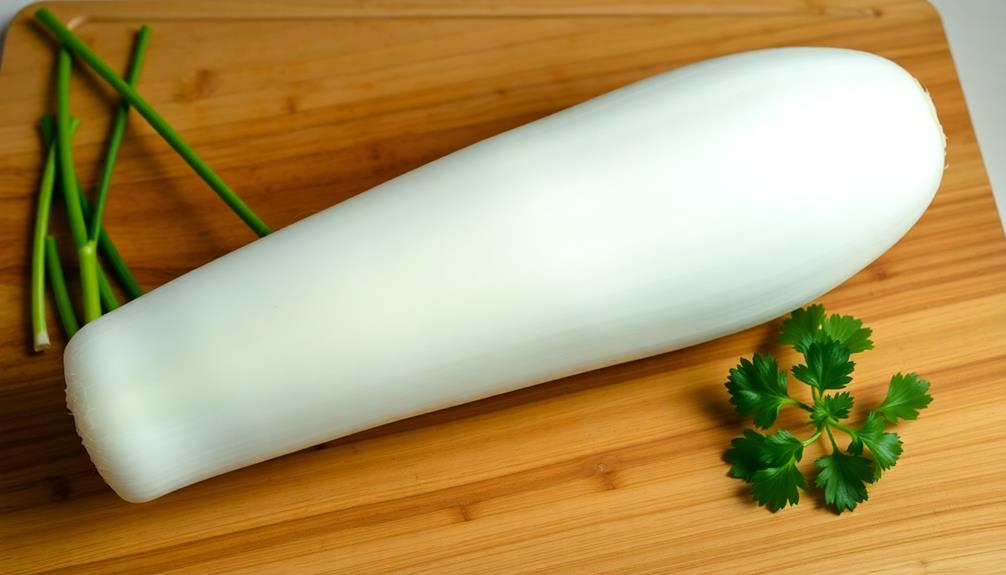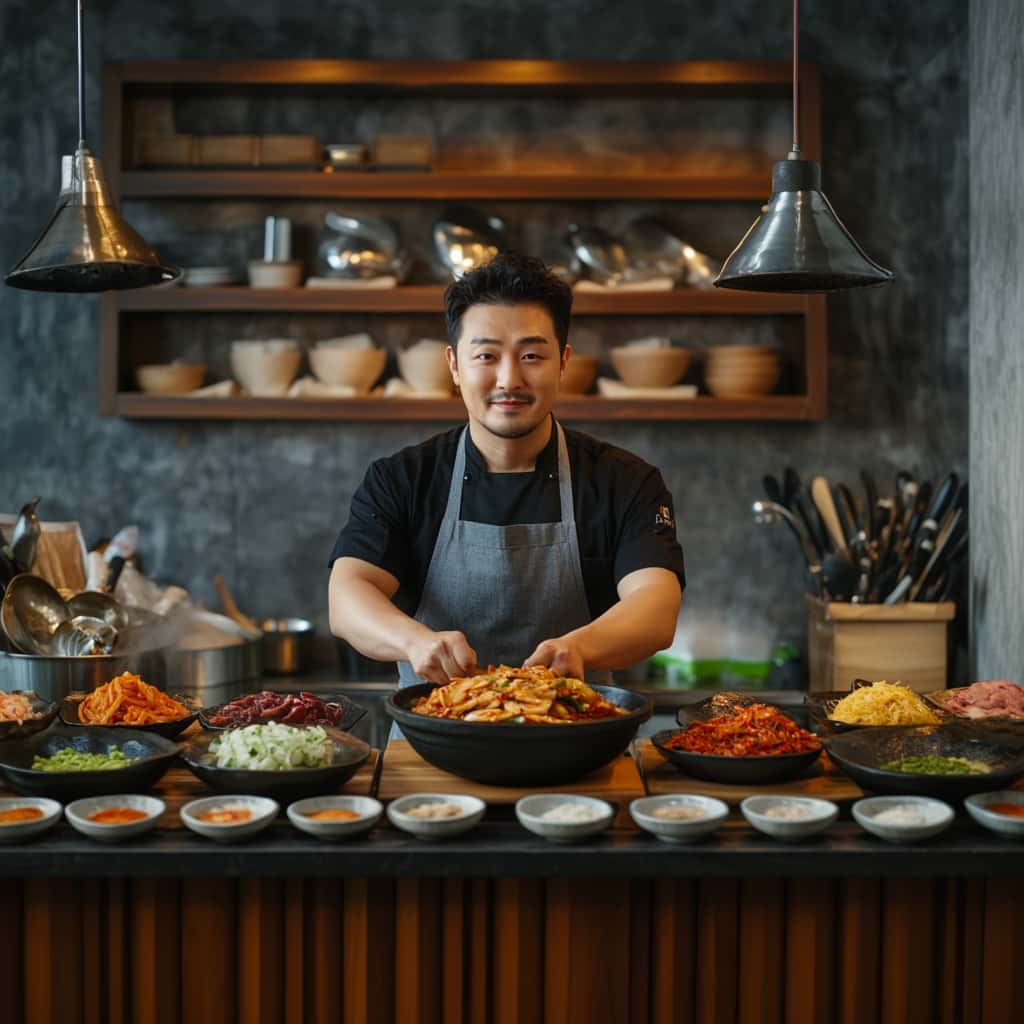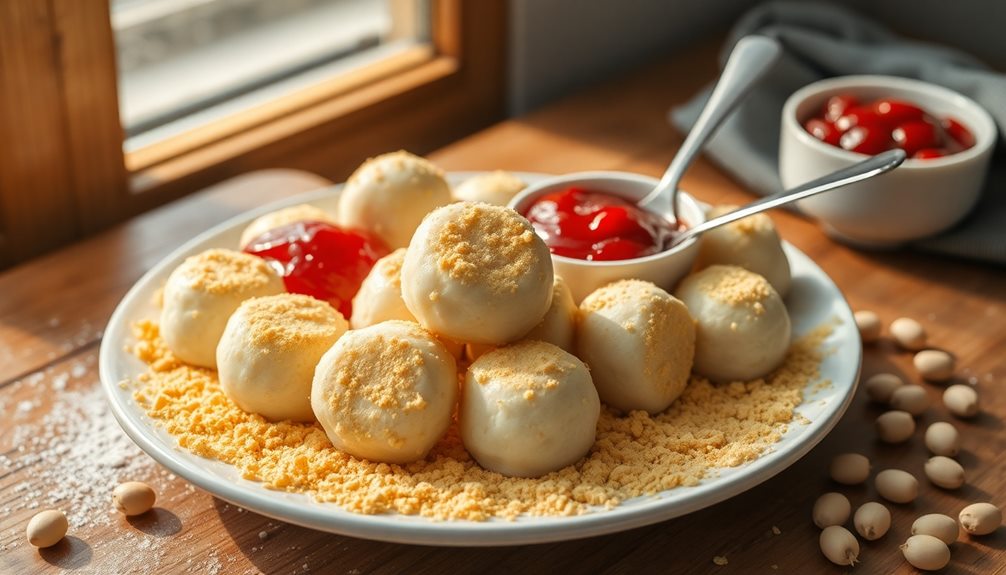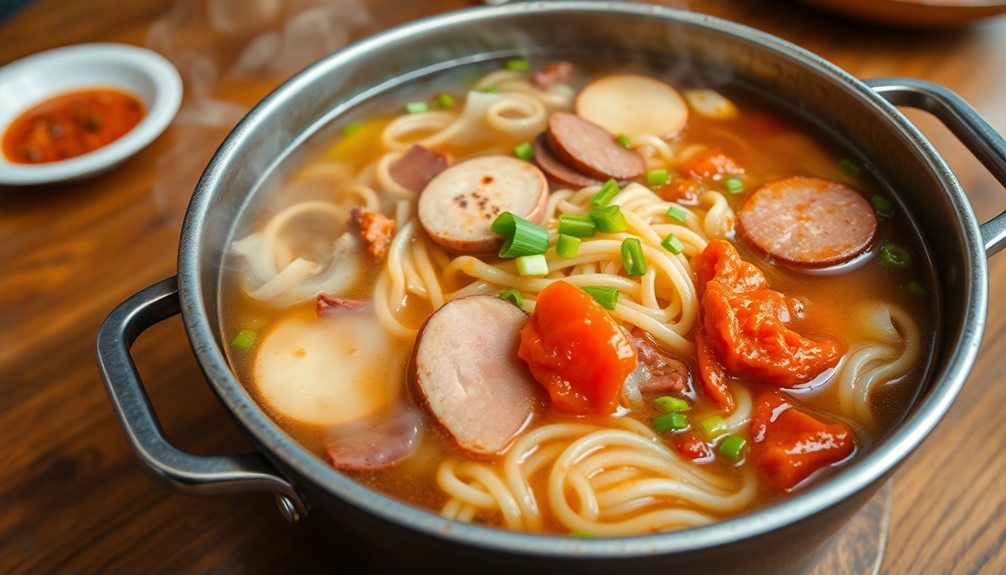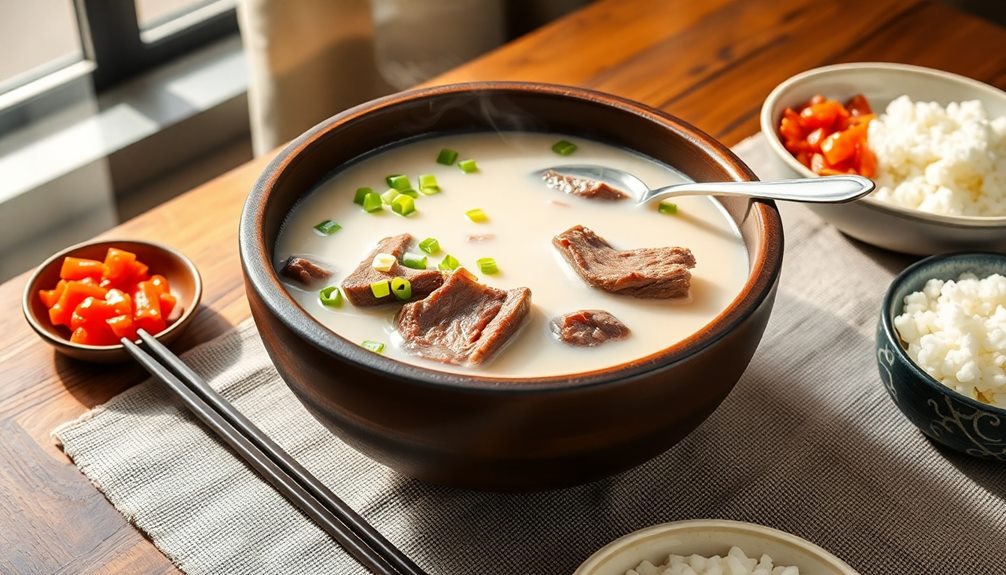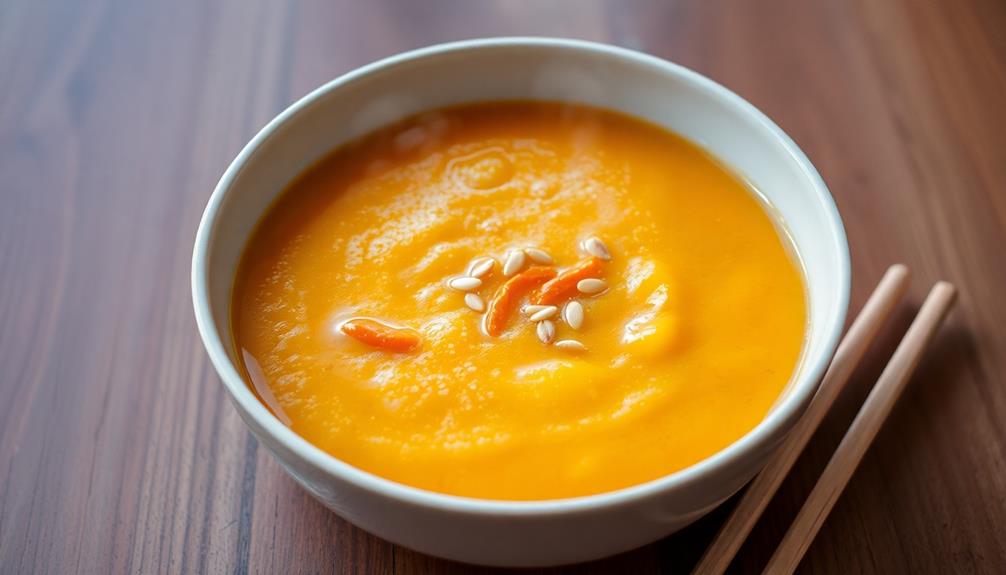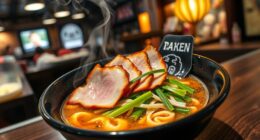You'll fall in love with daikon, the versatile white radish that's been a staple in Korean cuisine for centuries! This nutrient-rich veggie has a crisp texture and mild sweetness that complements Korea's bold flavors. From savory kimchi to hearty stews, daikon absorbs seasonings like a sponge, enhancing every dish. It's even considered a symbol of good fortune in Korean culture, featured in festive celebrations. Whether you enjoy it raw, pickled, or cooked, daikon's versatility means there's endless ways to incorporate this beloved ingredient into your meals. Just wait until you see how else this radish can elevate your cooking adventures!
Key Takeaways
- Daikon has been a staple in Korean cuisine for centuries, valued for its crisp texture and mild sweetness, and featured in dishes like kimchi and stews.
- Daikon is nutrient-rich, low in calories, high in vitamin C and fiber, and supports digestive health, lowers blood pressure, and aids weight management.
- Daikon adds a refreshing crunch and enhances flavor profiles in traditional Korean dishes, and can be eaten raw, pickled, or cooked in various ways.
- A simple daikon side dish features grated daikon mixed with soy sauce, sesame oil, brown sugar, garlic, ginger, and green onions, served chilled.
- Daikon's versatility in Korean cuisine allows for creativity, as it can be used in salads, pickled, or roasted, complementing the bold flavors of Korean cuisine.
History
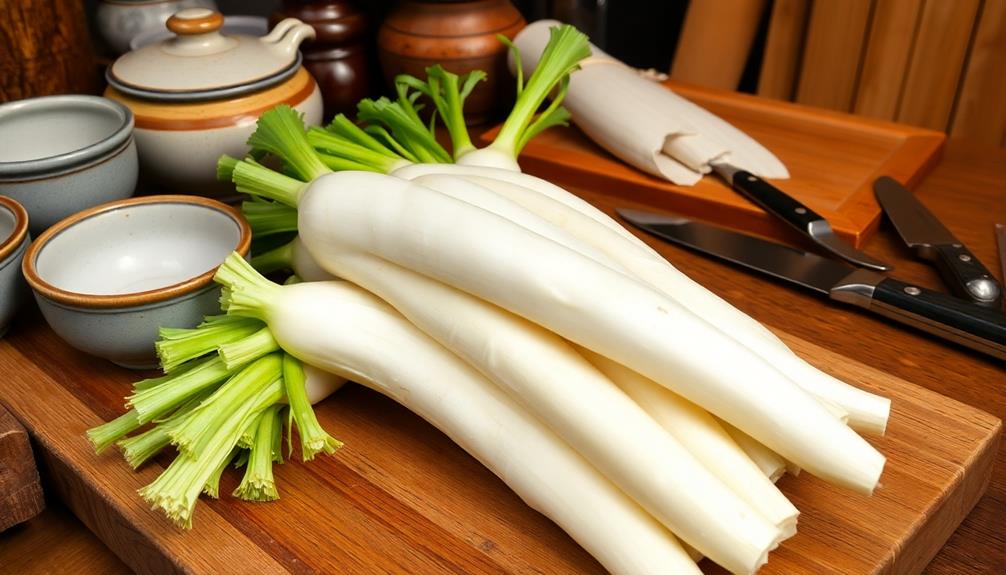
For centuries, daikon has been a staple ingredient in Korean cuisine. This versatile radish is deeply rooted in Korean culinary traditions, tracing back to the Goryeo dynasty in the 10th century. During this time, daikon was highly prized for its crisp texture and mild, slightly sweet flavor.
As Korean culture and cuisine evolved, daikon became a beloved part of the national diet. It found its way into a wide range of dishes, from savory kimchi to hearty soups and stews. Daikon's ability to absorb and complement various seasonings made it a natural fit for Korea's vibrant, flavor-packed cuisine.
Today, daikon remains a beloved ingredient, celebrated for its versatility and health benefits. Whether grated, pickled, or cooked, this humble radish continues to be a cornerstone of Korean culinary traditions, delighting both home cooks and renowned chefs alike.
Recipe
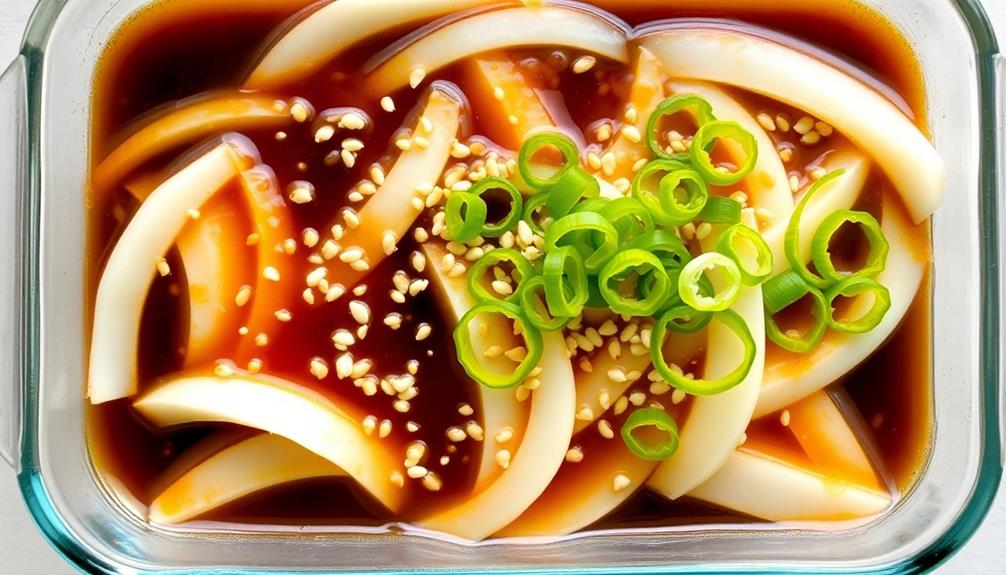
Daikons, also known as white radishes, are a staple ingredient in Korean cuisine. These large, cylindrical root vegetables add a unique crunch and subtle sweetness to a variety of dishes. One popular way to enjoy daikon is by preparing it in a simple, yet flavorful recipe.
The versatility of daikon allows it to be used in both savory and sweet dishes. In this recipe, we'll showcase how to incorporate daikon into a traditional Korean side dish that pairs well with rice, grilled meats, or stews.
- 1 pound daikon, peeled and sliced into thin strips
- 2 tablespoons soy sauce
- 1 tablespoon brown sugar
- 1 teaspoon sesame oil
- 1 clove garlic, minced
- 1 teaspoon grated ginger
- 1/2 teaspoon crushed red pepper flakes (optional)
- 2 tablespoons sesame seeds
- 1 green onion, thinly sliced
In a large bowl, combine the sliced daikon, soy sauce, brown sugar, sesame oil, garlic, ginger, and red pepper flakes (if using). Toss the ingredients together until the daikon is evenly coated. Allow the mixture to marinate for 30 minutes, stirring occasionally.
When ready to serve, transfer the marinated daikon to a serving dish and sprinkle with sesame seeds and sliced green onions. This dish can be enjoyed at room temperature or chilled, making it a versatile side that can be prepared ahead of time.
The key to this recipe is allowing the daikon to fully absorb the flavorful marinade, resulting in a delightful balance of sweet, savory, and slightly spicy notes.
Cooking Steps
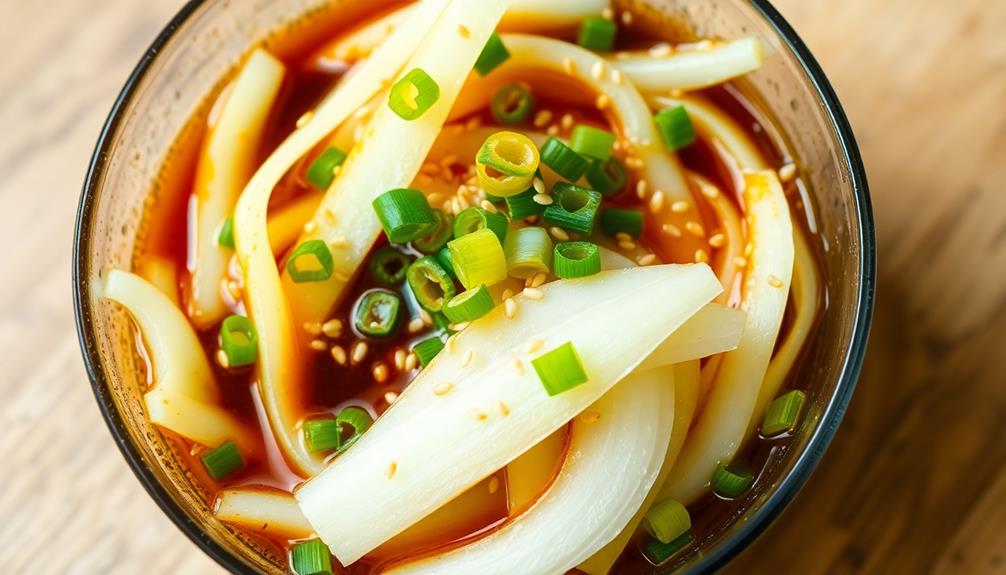
Rinse the daikon under cool running water to wash off any dirt.
Peel the daikon and grate it using a large-holed grater.
In a bowl, mix the grated daikon with soy sauce and sesame oil until well combined.
Top it off with sliced green onions for a refreshing side dish that's best served chilled.
Step 1. Rinse Daikon Under Cold Water

After trimming the ends, you'll want to give the daikon a thorough rinse under cold running water. This helps remove any dirt or impurities that may have accumulated on the surface.
Gently scrub the daikon with your hands as you rinse, ensuring it's squeaky clean and ready for the next step.
Once it's rinsed, you can pat the daikon dry with a clean kitchen towel or paper towels. This will help prepare the vegetable for whatever tasty Korean dish you plan to create.
Whether you're making a hearty stew, a crisp salad, or a flavorful side, starting with a clean daikon is the key to unlocking its full potential.
Step 2. Peel and Grate the Daikon
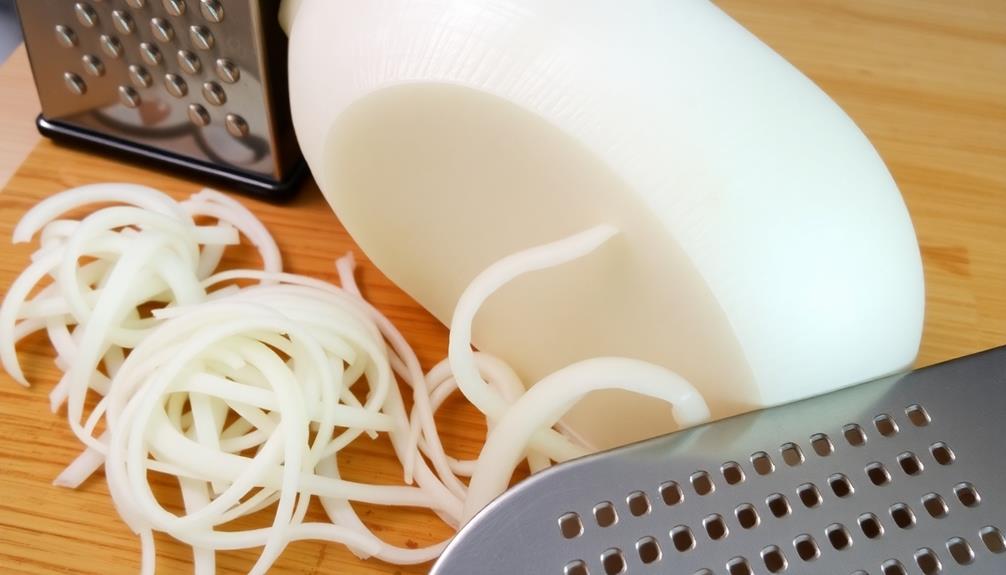
With the daikon now clean, it's time to peel and grate it. First, grab a sharp vegetable peeler and gently remove the thin skin, taking care not to waste too much of the flesh. You'll want the daikon to be smooth and blemish-free.
Next, grab a sturdy box grater and position the large holes facing up. Carefully run the daikon across the grater, applying gentle pressure to create long, thin shreds. Keep grating until you've transformed the entire daikon into a fluffy, snow-white pile.
The key is to grate the daikon in a way that creates long, delicate strands. This texture is perfect for enhancing the crunch and flavor in all sorts of Korean dishes, from spicy salads to savory pancakes.
Step 3. Mix With Soy Sauce and Sesame Oil
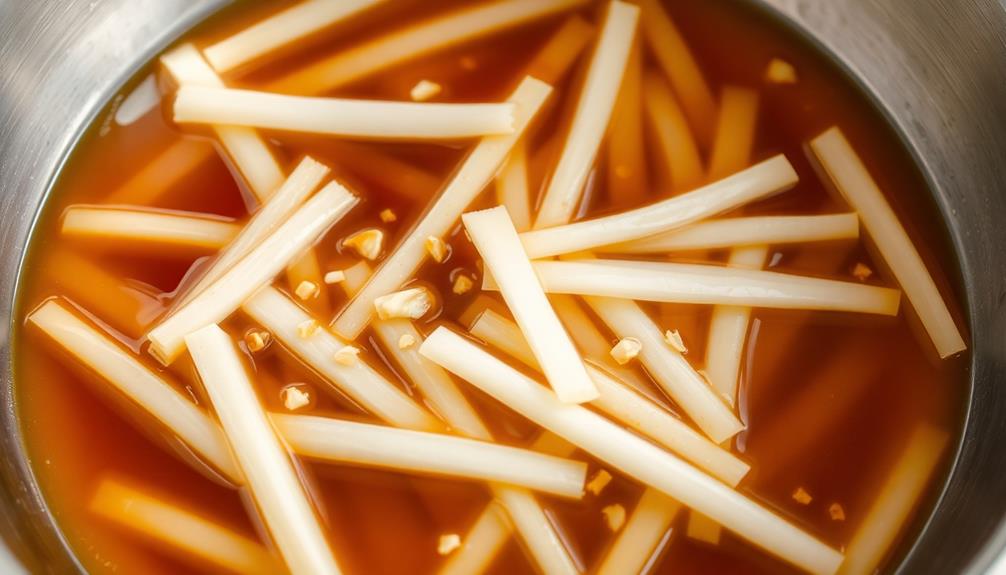
Take the grated daikon and place it in a mixing bowl.
Now, you'll want to add a few tablespoons of soy sauce and a drizzle of nutty sesame oil. Stir it all together until the daikon is nicely coated. The soy sauce will bring a savory depth, while the sesame oil adds a wonderful fragrance.
This simple mix makes a fantastic side dish or topping for all kinds of Korean meals. Try it with grilled meat, stir-fries, or even as a crunchy garnish for soup. Its tangy, savory flavors and crisp texture pair beautifully with the bold and spicy notes of traditional Korean cuisine. For a complete and balanced meal, enjoy it alongside a chilled glass of refreshing Korean rice punch, which adds a subtly sweet contrast. This combination is perfect for sharing with friends and family during a cozy dinner or festive gathering.
The flavors are bold yet balanced, with the daikon providing a satisfying crunch.
For an extra pop of flavor, you can sprinkle on a pinch of toasted sesame seeds or dried chili flakes.
Get creative and have fun experimenting! This versatile daikon dish is sure to become a new family favorite.
Step 4. Add Sliced Green Onions
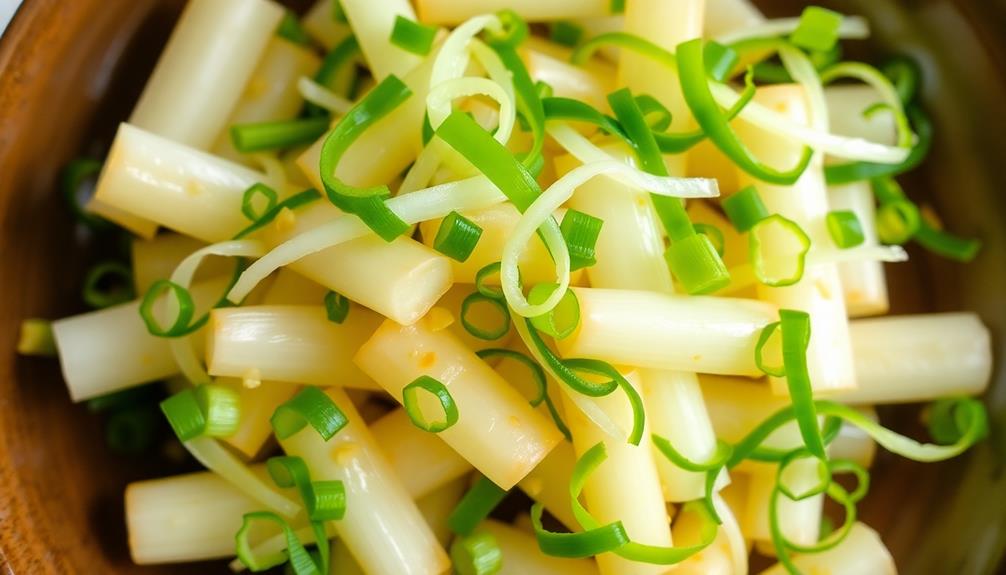
Next, slice some green onions into thin rounds. These vibrant green slices will add a lovely pop of color and a fresh, zesty flavor to your dish.
Green onions aren't only delicious but also provide health benefits, as they're low in calories and rich in antioxidants, making them a great addition to your meals for anti-inflammatory benefits. Simply take a bunch of green onions and cut them crosswise, creating little green rings that will beautifully decorate your daikon radish creation.
The cool, crunchy daikon pairs so nicely with the crisp, pungent green onions. Their flavors mingle together, creating a harmonious balance that will delight your taste buds.
Sprinkle the sliced green onions over the top of your soy sauce and sesame oil-dressed daikon, making sure to distribute them evenly.
The green onions not only add wonderful flavor but also a visually appealing touch. Their bright green hues will make your dish look fresh, vibrant, and appetizing.
Get ready for your taste buds to dance with joy at the delightful combination of tastes and textures!
Step 5. Serve Chilled for Refreshing Side Dish
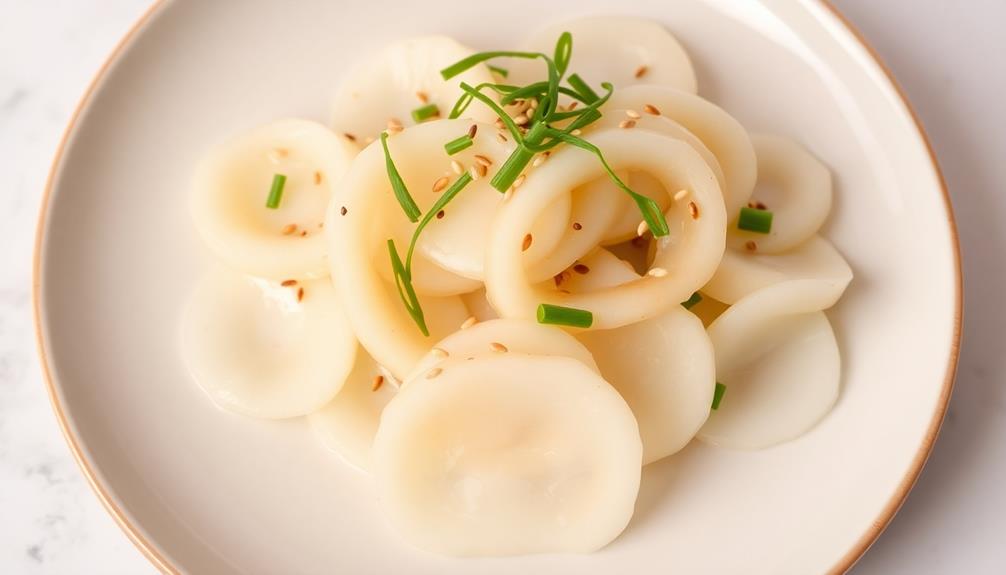
To serve the daikon radish dish chilled for a refreshing side, simply place the prepared ingredients in the refrigerator for about 30 minutes. This will allow the flavors to meld and the crisp texture of the daikon to become even more refreshing.
Once chilled, arrange the sliced daikon on a serving plate and top it with the bright green onion slices. The contrast of the white daikon and the vibrant green onions creates a visually appealing dish that's perfect for a hot summer day or a lively Korean-inspired meal.
Serve this chilled daikon side alongside your main course, or enjoy it on its own as a light and healthy snack. The cool, crunchy daikon and the subtle onion flavor will leave you feeling refreshed and satisfied.
It's a simple yet delightful way to incorporate this versatile vegetable into your Korean culinary adventures.
Final Thoughts
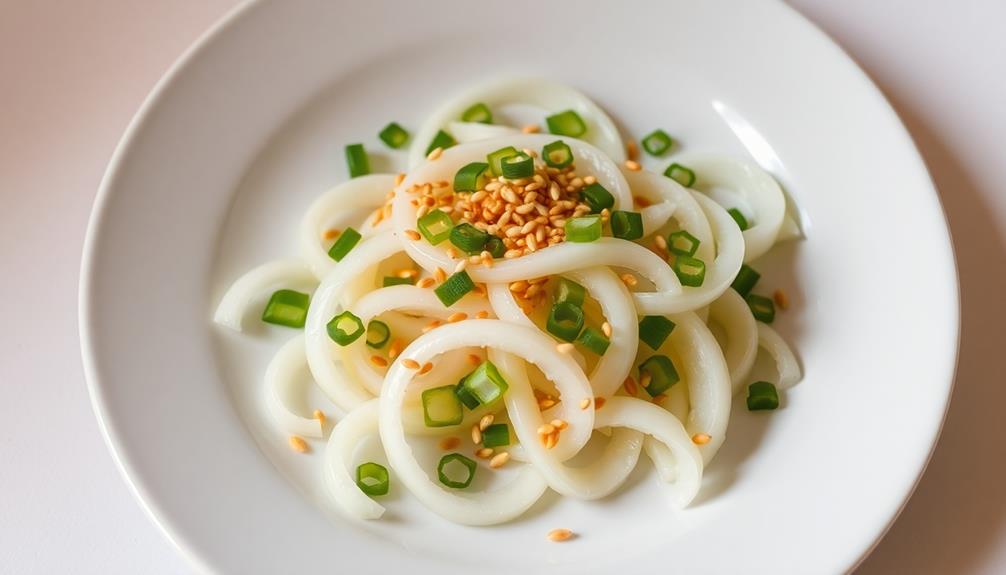
Daikon's versatility in Korean cuisine is truly worthy of further exploration. Whether you're enjoying it as a refreshing chilled side dish or incorporating it into a hearty stew, this versatile radish adds a delightful crunch and subtle sweetness to a variety of dishes.
Don't be afraid to get creative! Try shredding daikon into salads, pickling it for a tangy twist, or even roasting it for a caramelized flavor. The possibilities are endless.
Daikon's mild taste makes it a fantastic canvas for bold Korean spices and seasonings. Explore the vibrant world of kimchi, where daikon shines as a star ingredient.
Or, if you're feeling adventurous, experiment with blending daikon into your favorite soups and stews for a unique texture and flavor profile.
Embrace the wonder of daikon and let it transport you to the heart of authentic Korean cuisine. Your taste buds will thank you!
Frequently Asked Questions
How Do I Select the Best Daikon Radish for Cooking?
When selecting a daikon radish for cooking, look for one that's firm, heavy, and free of blemishes. Avoid daikon that's wilted or discolored, as they may be past their prime. Choose a size that suits your recipe's needs.
Can I Substitute Daikon for Other Types of Radish?
You can substitute daikon for other types of radish, but the flavor and texture may differ. Daikon has a milder, sweeter taste compared to other radishes. Consider the dish and adjust cooking times if using a different radish variety.
How Long Does Daikon Last in the Refrigerator?
Typically, daikon radish will last 2-4 weeks in the refrigerator when stored properly. Keep it wrapped in a damp paper towel or stored in a sealed bag to maintain its freshness for longer.
What Are the Health Benefits of Consuming Daikon?
Consuming daikon provides you with numerous health benefits. It's rich in vitamins, minerals, and antioxidants that can boost your immune system, aid digestion, and even reduce inflammation. Plus, it's low in calories, making it a great addition to your diet.
Can I Use Daikon in Stir-Fries or Is It Only for Soups?
You can definitely use daikon in stir-fries! It's a versatile vegetable that adds a crunchy texture and mild flavor to various dishes. Don't limit it to just soups – experiment with it in stir-fries for a delicious addition.
